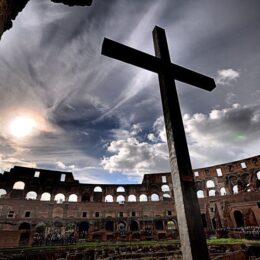Investor’s Business Daily | Sep. 3, 2009
Ignoring peak-oil Cassandras, BP has made another giant oil find in the Gulf of Mexico. We’re not running out of oil. Our government just doesn’t want us to look for it.
The world is running out of oil and good riddance. That’s the environmentalists’ mantra. But since the first well was drilled near Titusville, Pa., 150 years ago, the prophecy has gone unfulfilled. Trouble is, those darn greedy oil companies keep finding the stuff.
Oil has been produced in the Gulf of Mexico since the first well was drilled by Kerr-McGee Corp. in 1947. Some of the wells are pretty well played out by now, except that over the past two decades or so, oil explorers began to notice a curious thing. Shallower wells that were thought to be exhausted seemed to be filling up again.
This, and the discovery of vast natural-gas deposits at depths greater than 10,000 feet, mean that either (1) we haven’t been drilling deep enough or (2) oil and gas are not finite resources deposited long ago, but rather the result of still-functioning processes deep within the earth. Either way, there’s much more to be had.
So British Petroleum went looking for it at depths that had never been plumbed. The spot where it hit black gold is in a place called the Tiber Prospect about 250 miles southeast of Houston. The Tiber well was drilled to a depth of 35,055 feet, which is greater than the height of Mount Everest.
BP, whose partners include Conoco Phillips and the Brazilian company Petroleo Brasilero SA, says the discovery may hold as much as 3 billion barrels of oil. That equates to about a year’s worth of output from OPEC giant Saudi Arabia.
As Bloomberg notes, Tiber is BP’s second discovery in three years in a geological formation in the Gulf known as the lower Tertiary that consists of a layer of rocks created 24 million to 65 million years ago.
Geologists and engineers didn’t know if oil could be recovered at such depths until Chevron drilled a well into its Jack Prospect in 2006. Chevron drilled in 7,000 feet of water and more than 20,000 feet under the sea floor.
Its Jack No. 2 well, in deep water 270 miles southwest of New Orleans, tapped a field with perhaps 15 billion barrels of oil.
The U.S. Minerals Management Service says that, all told, offshore areas off-limits to U.S. drilling contain upward of 86 billion barrels of oil and 420 trillion cubic feet of natural gas.
The oil is there and oil companies are willing to go after it if we let them. Think of it: American oil creating American jobs while lowering gas prices. Congress, however, continues to place most of the Outer Continental Shelf, the Arctic riches of the Chukchi Sea and ANWR, and the shale-rich Rocky Mountain West off-limits. In other words, it doesn’t know Jack.
If Brazil had copied America’s current energy policy, it wouldn’t have discovered in December 2007 the Tupi field, estimated to contain 5 billion to 8 billon barrels of crude, or its Carioca offshore oil field that may hold up to 33 billion barrels.
Much was made of the U.S. Export-Import Bank sponsoring a $10 billion loan to Brazil’s Petrobras to develop its offshore fields. That will help increase the world’s oil supply and further disprove the peak oil nonsense.
But we need to be doing more in our waters and on our land.
The BP project shows that our resources may be limited only by technology and will. It shows the kind of expensive technology required and what oil companies do with their profits — look for more oil. Drilling seven miles into the seabed is not what you do when, as the anti-oil crowd often charges, you are hoarding supplies to drive up prices.
. . . more



